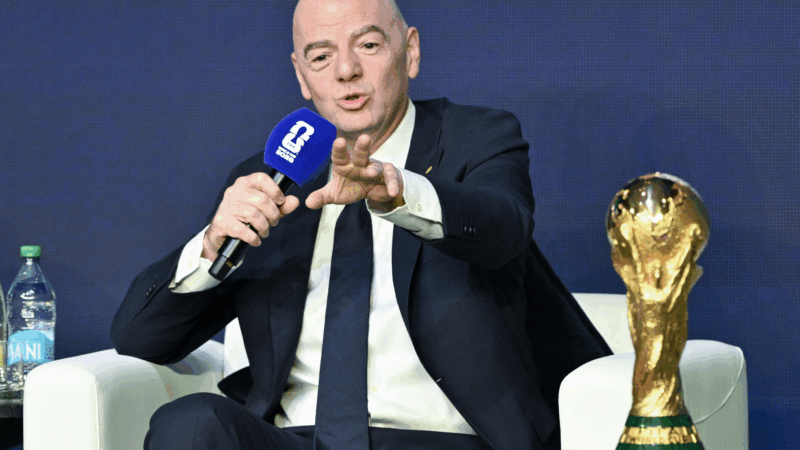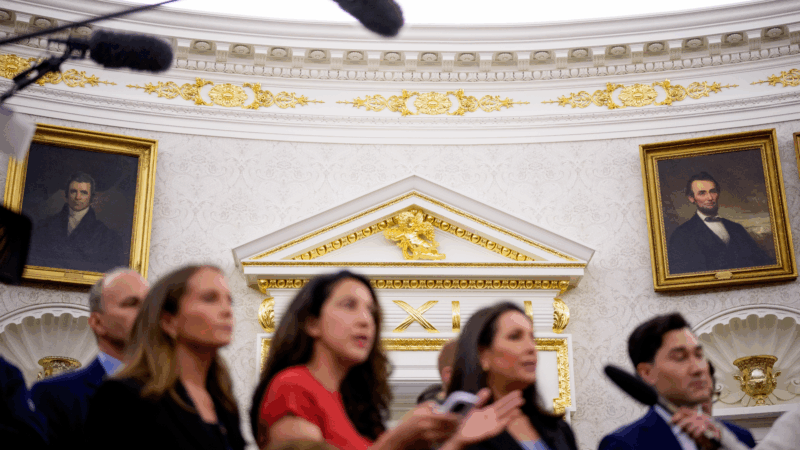Public arts funding
Trobaugh rips away preservative brown paper and saran wrap, the massive, movie-poster-sized laminated pictures show his narrative: life-sized shots of male dolls embracing one another, holding hands, touching.
“If you see a lot of the photographs together, you can see that sometimes it’s about a deeper friendship than just a normal friendship.”
Five years ago, Trobaugh was an adjunct art professor at Shelton State Community College when he was asked to present an exhibit in a public gallery.
“I showed them my work. Because they knew vaguely what I did, but not exactly. And they really liked it.”
Liked it at first. Until the college president decided that the gay images might bother people coming to the college to see a production of “Arsenic and Old Lace”. The photos, he said, were not family friendly and because the college receives state money, he closed Trobaugh’s exhibit.
“Censorship is an awfully harsh word.”
That’s college spokesperson Leigh Hays who says Shelton State’s art department and the college’s new administration are trying to formulate a policy that would make everyone happy.
“We’ll look at opportunities as they come up of art shows, art exhibits, performances prior to them being open so that we are all on the same page and we are all in agreement as to what’s in the best interest of the college, our students, our program and our community.”
Hays says it is a tightrope over some fierce flames. What the school eventually decides is at the intersection of first amendment law, government funding and public opinion. What is art? … and … what is offensive or obscene?
In 1973, a famous U.S. Supreme Court case, Miller vs. California, didn’t involve art – but rather, mailings of so-called sexually explicit material. But the case rippled across the art world because the high court has used the Miller case as a gauge of what can be thought of as obscene. And that gauge includes “artistic value”.
The so-called Miller test also established the idea of “community standards” of decency and interpretations that can be as numerous as the boundaries of cities, counties and states themselves. Just ask Birmingham residents Todd Sanstead and Emily Self.
“Going with every reaction to pull a piece just because it makes people uncomfortable is probably not the right answer. Giving people complete ability to put things out that offend a large group of people is probably not the right answer as well.”
“I think it can be complicated if politics and art get too entangled.”
But they are.
The National Endowment for the Arts – or NEA, which has also funded public broadcasting, has been at the center of funding arts projects since 1965.
This fiscal year, the NEA will dole out more than $140 million to arts organizations coast to coast, but in 1996, Congress slashed the budget by more than a third, under pressure from conservative and family groups over funding for controversial artists. Artists such as Andres Serrano – whose works include an image of Jesus on a cross immersed in urine and Robert Mapplethorpe, whose explicit nude male photographs fueled protests about obscenity.
“Why would someone ask the Christians across this country to pay any kind of money toward the gay and lesbian film festival? Why would we ask gays and lesbians to pay for some type of art form that may go against what they believe in?”
Bay Buchanan is president of The American Cause, a conservative organization that, according to its website, promotes traditional American values.
“I don’t think it’s necessary and I don’t think art would lose its value, if it wasn’t funded by the government. I think the private sector would step in and we would have the kind of art that the American people would be willing to support.”
Or would it be the art that the majority supports? And the voices, etchings, paintings and sculptures of those who don’t have large audiences die on the vine. It is a constant battle that keeps arts organizations, such as Birmingham’s Space One Eleven and co-founder Anne Arrasmith, on their toes.
“I’m a taxpayer, and I don’t like my tax dollars going to bombs and all that kind of stuff, wars. But it does. So, if your tax dollar in teeny teeny proportion goes to Arts in America, it’s your problem.”
“It’s not just about encouraging a single artist to produce a work of art; it’s really about encouraging artistic activity in the United States.”
Karen Henricks is an art historian at Jacksonville State University. She says throughout American history, from early colonial times through the great depression and WPA projects, when artists were commissioned to paint public murals, the underpinning of government-sanctioned art was to encourage more expression and appreciation of it.
“You know you don’t support a theater program, or an artist, because they’re going to produce one thing. You support it because the entire public enjoys the product. So I think that, really, their goal was to bring that broad-based interest in art and to do it through looking at quality art as well.”
That concept continues today, but in a multi-media world of instant access, it is so much easier to see the controversial, and hear the reactions.
It is all a part of this artistic-public funding landscape.
How George Wallace and Bull Connor set the stage for Alabama’s sky-high electric rates
After his notorious stand in the schoolhouse door, Wallace needed a new target. He found it in Alabama Power.
FIFA president defends World Cup ticket prices, saying demand is hitting records
The FIFA President addressed outrage over ticket prices for the World Cup by pointing to record demand and reiterating that most of the proceeds will help support soccer around the world.
From chess to a medical mystery: Great global reads from 2025 you may have missed
We published hundreds of stories on global health and development each year. Some are ... alas ... a bit underappreciated by readers. We've asked our staff for their favorite overlooked posts of 2025.
The U.S. offers Ukraine a 15-year security guarantee for now, Zelenskyy says
Ukrainian President Volodymyr Zelenskyy said Monday the United States is offering his country security guarantees for a period of 15 years as part of a proposed peace plan.
Electric vehicles had a bumpy road in 2025 — and one pleasant surprise
A suite of pro-EV federal policies have been reversed. Well-known vehicles have been discontinued. Sales plummeted. But interest is holding steady.
A ‘very aesthetic person,’ President Trump says being a builder is his second job
President Trump was a builder before he took office, but he has continued it as a hobby in the White House.







